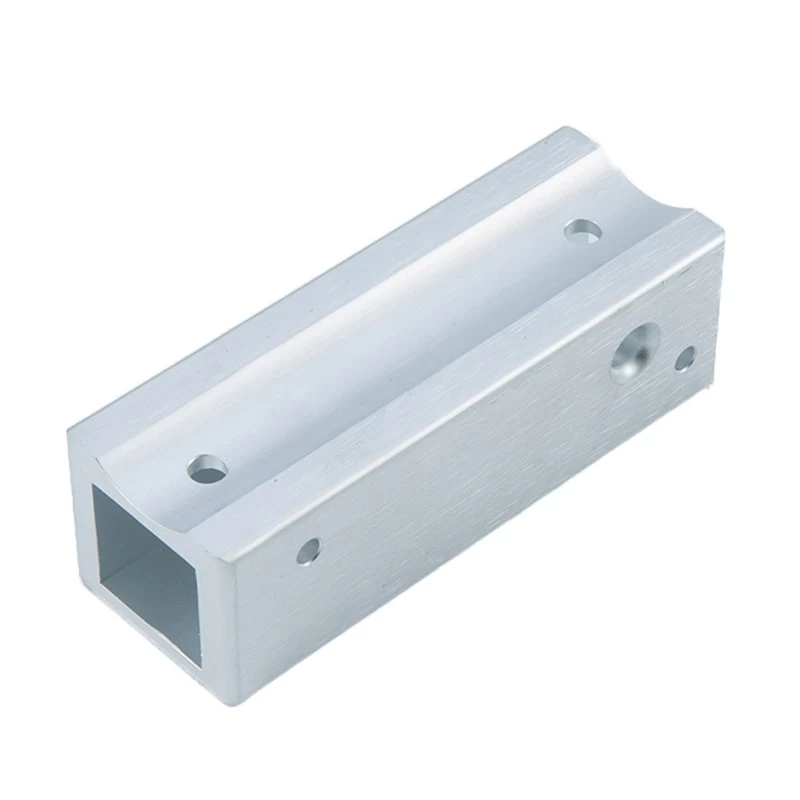What is the Extrusion Process?
Edith
www.xy-global.com
2018-07-31 12:04:17
Often, manufactured parts are designed to be of a certain complex cross-sectional pattern, with fittings, flanges, protrusions, and flat edges that must be integrated into a particular shape with specific tolerances in the finished product. The manufacturing of these specialized shapes or cross-sections is usually accomplished using an extrusion process. This process utilizes heat, pressure, and cooling to produce a semi-liquid, or paste, to be forced through a die, and after emerging from the die, hardened to a designated temper.
The extrusion process is used most frequently to form plastic and aluminum parts or products. However, ceramics, heavier metals or alloys, and foods such as pasta, are also shaped and manufactured through the extrusion process. Essentially, as long as a material can be easily liquefied, it can be extruded.
Aluminum Extrusion processing is distinct from stamping or molding, for instance, in that the extruded material will form intricate, strong, and durable fittings, parts, and pieces from brittle stock that is difficult to shape through stamping, bending, or hammering. Intricate cross-sections such as hollow tubes or solid pieces, or rods with flanges or wings are far easier to manufacture through the extrusion process. Additionally, the finished surface of extruded products is consistently of higher quality than that of stamped or molded products.

Basically, the extrusion process involves loading small pieces of raw material or stock into a hopper at one end of the extruder. In the case of the plastic extrusion process, this raw material is called pellets, and in the aluminum extrusion process, billets. The raw stock is fed from the hopper into the extruder, essentially a heated cylinder, where it is softened. A ram, usually a worm gear, forces the semi-liquid raw material through a smaller chamber, then through a shaped die. From the die, the extrusion, the string, tube, or rod of shaped stock, is cooled with water or air, along the run out table to harden. At the end of the run out table, the hardened product is cut, wound, shipped, or sent on to further refining.
Both heated and cool raw materials are amendable to extrusion processing. Of course, the cooler raw material, the pellets or billets, for example, require far higher pressure to force the less malleable material through the smaller chamber and the die. The temperature and pressure factors in the extrusion process are crucial to the tempering, the strength and finish, of the end product. The extrusion ratio, the division of the cross-sectional area of the entire die by the cross-sectional area of the extruded product is also crucial in determining the best method of extrusion, cold or hot, high pressure or low pressure.、

The extrusion process is used most frequently to form plastic and aluminum parts or products. However, ceramics, heavier metals or alloys, and foods such as pasta, are also shaped and manufactured through the extrusion process. Essentially, as long as a material can be easily liquefied, it can be extruded.
Aluminum Extrusion processing is distinct from stamping or molding, for instance, in that the extruded material will form intricate, strong, and durable fittings, parts, and pieces from brittle stock that is difficult to shape through stamping, bending, or hammering. Intricate cross-sections such as hollow tubes or solid pieces, or rods with flanges or wings are far easier to manufacture through the extrusion process. Additionally, the finished surface of extruded products is consistently of higher quality than that of stamped or molded products.

Basically, the extrusion process involves loading small pieces of raw material or stock into a hopper at one end of the extruder. In the case of the plastic extrusion process, this raw material is called pellets, and in the aluminum extrusion process, billets. The raw stock is fed from the hopper into the extruder, essentially a heated cylinder, where it is softened. A ram, usually a worm gear, forces the semi-liquid raw material through a smaller chamber, then through a shaped die. From the die, the extrusion, the string, tube, or rod of shaped stock, is cooled with water or air, along the run out table to harden. At the end of the run out table, the hardened product is cut, wound, shipped, or sent on to further refining.
Both heated and cool raw materials are amendable to extrusion processing. Of course, the cooler raw material, the pellets or billets, for example, require far higher pressure to force the less malleable material through the smaller chamber and the die. The temperature and pressure factors in the extrusion process are crucial to the tempering, the strength and finish, of the end product. The extrusion ratio, the division of the cross-sectional area of the entire die by the cross-sectional area of the extruded product is also crucial in determining the best method of extrusion, cold or hot, high pressure or low pressure.、




















